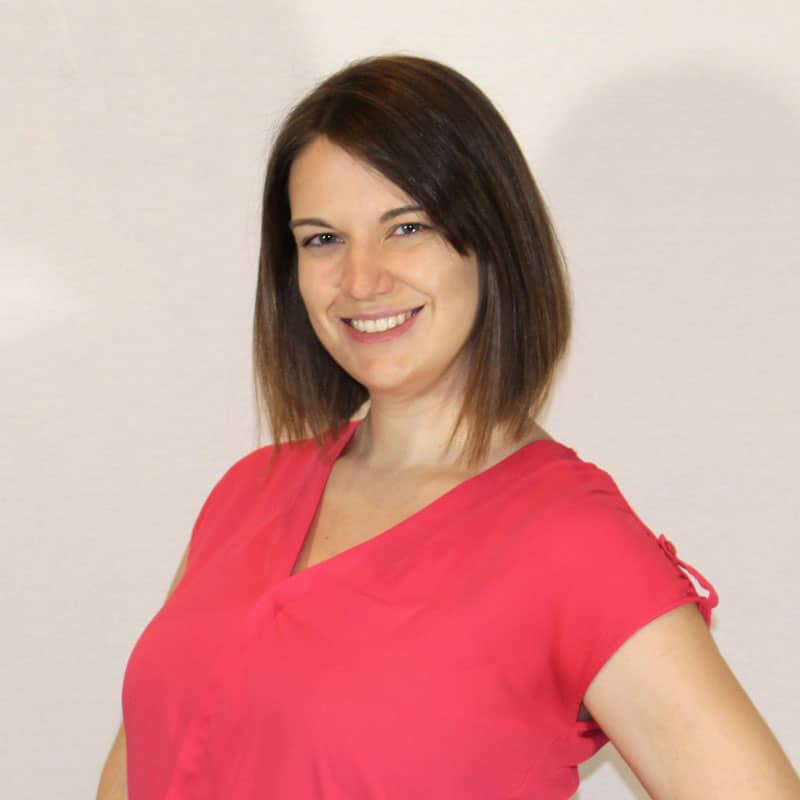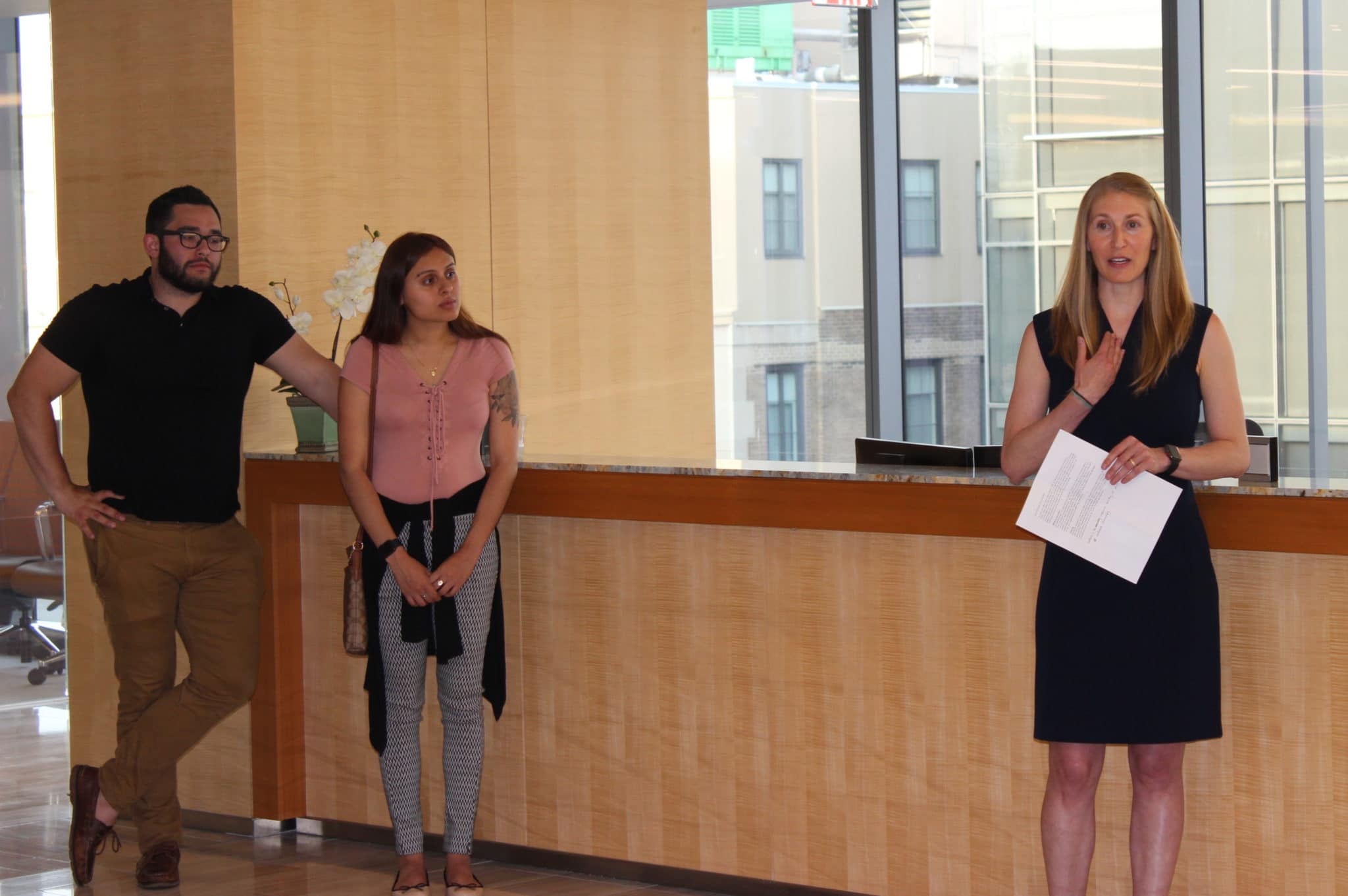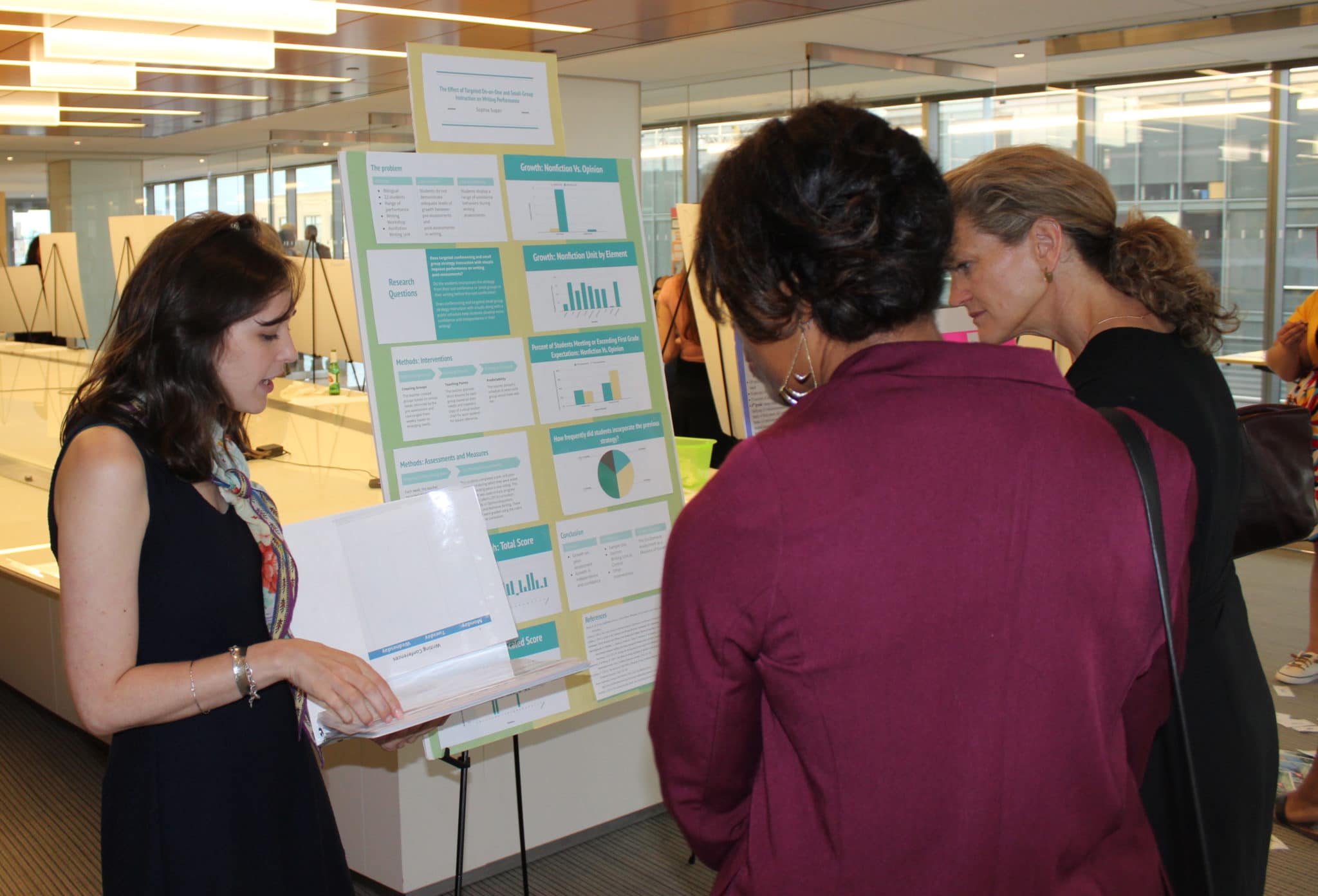
Change itself may be inevitable, but positive change is a choice that we can make. Building on the best intentions, knowledge, and resources, we can be proactive about the change we want to see. That’s why Inspired Teaching loves the word changemakers, and that’s why we use it as a keyword to how we frame our mission.
On the evening of May 28, Inspired Teaching staff, Residency alumni, Real World History students, and members of our DC-area educational community gathered at the offices of Holland and Knight LLP for Changemakers in Action, a celebration of engagement-based education and Residency’s 10th anniversary.
We heard from three featured speakers: Ariel Weissburg, Director of Curriculum & Instruction at Sela Public Charter School; Saul Diaz-Cruz, a student from Capital City PCS and winner of the citywide National History Day contest; and Zachary Parker, Ward 5 Representative on the DC State Board of Education. We also celebrated the release of a new white paper titled Closing the Engagement Gap: A Social Justice Imperative.
Speakers for Change
Ariel Weissburg has the distinction of being a 2009 Inspired Teaching Fellow from the Residency’s inaugural cohort. She spoke about success as an individual and a teacher throughout her life, and about how the Inspired Teaching community helped her achieve it in so many ways. That success includes her current administrative role at Sela PCS.

Above: 2009 Inspired Teaching Fellow Ariel Weissburg shares her story as an Inspired Teacher.
Saul Diaz-Cruz is in Inspired Teaching’s Real World History program at Capital City PCS. He’s a first-place winner for individual websites in DC’s National History Day contest, which qualified him for the national contest. He shared an excerpt from his presentation about Dr. Martin Luther King, Jr. and the Chicago Freedom Movement. His articulation and passion spoke to RWH’s powerful engagement, and it was easy to see why this young man won in his category.
Zachary Parker, in addition to representing Ward 5 on the DC State Board of Education, also serves as Senior Director of School Support for The Achievement Network. He based his remarks that evening on the question, “How can the onus of learning be put on the student?” As a third-generation educator who’s been a leader in the fight against educational inequity for over ten years, in both New Orleans and DC, Zachary showed a keen understanding of student engagement as the key to academic success.
Real World History
Saul’s work and those of his Real World History classmates emphasized our daily connection to the historical resources that surround us. Other students in the program shared their National History Day projects as well as the work they’ve done at their internship sites across the city. We were fascinated to see the different ways that they connected with the “real world” through the course — and proud to see how Inspired Teaching’s RWH program had inspired so many students.
One student discovered that his next-door neighbor had been part of the Great Migration of African Americans from the South to the North and West during the early and mid-20th century, and he interviewed him for RWH’s oral history project. Another student interned at the Woodrow Wilson House, which happened to be displaying Helen Zughaib’s Migrations, an exhibit depicting the journeys of present-day Syrian refugees. This student was captivated to learn that Ms. Zughaib was reinterpreting Jacob Lawrence’s Migration Series, a set of prints documenting the journeys of African Americans between 1916 and 1970 that RWH students analyze each year in the course.
Another student shared his National History Day project about Fort Stevens. He chose this topic not only because his name was Steven, but because he lived near Fort Stevens and “never really knew much about it until now.” After presenting his exhibit at NHD, the Fort Stevens staff invited him to present it at the commemoration of the anniversary of the Civil War-era Battle of Fort Stevens.

Above: Zachary Parker speaking with a Real World History student about his National History Day project.
Social Justice and Action Research We also celebrated the release of a new white paper titled Closing the Engagement Gap: A Social Justice Imperative. This work reflects our long-held belief that how we teach students is a critical piece of educational equity — at least as important as policy, access, discipline, and other issues commonly associated with equity. Educators nationwide are starting to recognize that our schools must rethink education itself in order to promote equity. Closing the Engagement Gap gathers the research that we hope will shift this focus toward pedagogy.
This theme was supported throughout the evening, particularly when the 2017 Inspired Teaching Fellows presented action research from their classroom. Each had chosen a topic that was meaningful to them and their students, including:
- Storytelling Story Acting in a Mixed-Age PreK Classroom: Impacts of Oral Language and Vocabulary Development
- How Can Listening Sessions Impact Students’ Attitudes About School?
- How Does Classroom Rearrangement Affect Student Learning?
- The Effects of Teacher Self-Care on Student-Teacher Relationships
The Fellows noted that the research they did in the spring semester will directly inform their role as teacher next year, and that their results were directly actionable for their classrooms.

Above: 2017 Inspired Teaching Fellow Sophie Super shares her action research with guests.
In our world, this is what change looks like. And we were happy to celebrate our kind of change that evening in a roomful of changemakers!.
